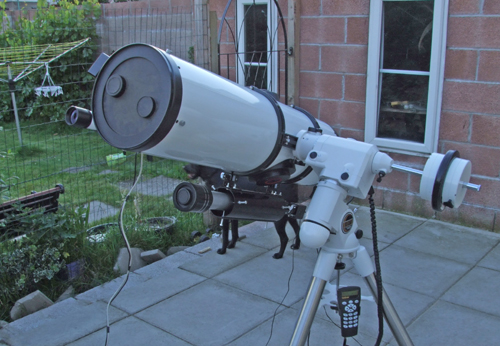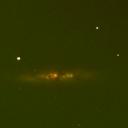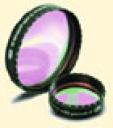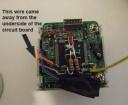Where shall I start, I’m almost glad it’s cloudy tonight so that I can catch up on some processing and some much needed sleep 
Tuesday: I attached the “guidescope” and had a go at autoguiding, but my 1004x wasn’t working and the SPC900NC was needed for imaging. I did try the SPC900 just to see if the guidescope was up to the task and was disappointed to find that stars couldn’t be focused to a point. I think this may be due to the small pixel size on the CCD and hope the 1004x will do a better job when I get it working. After several hours of playing with different guide software I ended the session with some images and got my best M82 to date. This image was made by stacking 24×40 second frames using Registax and finishing the image off in Photoshop.
This image was made by stacking 24×40 second frames using Registax and finishing the image off in Photoshop.
I also got a good M57 and some Jupiter shots, but I’m not happy with the results I’m getting with the SPC900 in “video” mode, so have been using the ICE and Trust cameras for planetary work.
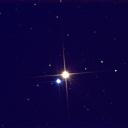
Wednesday: I wasn’t happy with the setup and after a 3 star alignment chose Albireo in Cygnus at random to check if the mount was working. What a surprise to find this jewel winking at me from the center of my screen. Id never looked in this direction before and was surprised by the colour difference brightness of this double star.
I got some more M82’s and also bagged Mizar while I was doing the doubles. Taking a little time to set the mount up properly is paying off with better tracking which in turn leads to longer exposures. I pushed the camera to over 60 seconds just to see how it held up, but with a slight breeze nudging the scope from time to time I didn’t get many usable frames. I also took time to play with the camera settings and found that reducing the gamma and gain controls helped me keep the backdrops darker. Every night I learn something new.
Thursday: I started by getting a few more shots of Albireo to show my son before his bedtime, but it doesn’t get dark until 10:30 so he wasn’t able to stay up to see galaxies and nebulae. We’ll have to wait until October for dark evenings, and hopefully by then I’ll be better at taking these long exposure shots.
After slewing across the sky making sure the mount was aligned I hit the tour button on the hand controller and was amazed to see the Swan Nebula appear before me. I hadn’t considered the SPC900 sensitive enough to pick up colourful nebula, but with no breeze the LX modded camera was happily doing 40 second exposures and before long I had 24 frames saved to disk.
Happy with my first southerly nebula I entered M16 into the controller but wasn’t able to make out any nebulosity only a group of bright stars. I quickly fired up Starry Night and checked which Messier objects were visible in the low southern sky and armed with a list I returned to the scope. M8 was next, and after tweaking the camera settings I was able to get 20 frames at 30 seconds each. WOW, the nebula showed up easily on the screen and the stacked version can be seen here.
WOW, the nebula showed up easily on the screen and the stacked version can be seen here.
Something that is apparent from this image is that I need to buy an IR filter. The stars are far too bloated and I’m sure a filter will reduce them to pin points. My LPR filter does a good of taking the orange glow out, but I’ve dropped it into conversation with my wife and will take a look for one online after completing this post.
After M8, I turned to M18, just to get it onto my Messier chart. Open clusters are not too impressive without a focal reducer, perhaps I’ll drop that into conversation as well  Something that puts me off buying a focal reducer is that the Newtonian scope will need the mirror shifted upwards in order reach focus. I’ve only just got the collimation sorted out so don’t want to mess around with primary again for a while.
Something that puts me off buying a focal reducer is that the Newtonian scope will need the mirror shifted upwards in order reach focus. I’ve only just got the collimation sorted out so don’t want to mess around with primary again for a while.
Next was M20, again I couldn’t see anything on the screen and was about move to another object when a sideways glance revealed what appeared to be a dark area near two bright stars. I centered the image on the stars and tweaked the camera settings again. The nebula was there but only just visible. 26 frames at 40 seconds each gave me something to work with and a recognizable image has now been added to my chart (see images).
It was getting late again, but not wanting to squander an opportunity and knowing that I could have a later start in work the next morning I turned the scope on M16 again.
Now that the camera was set to 40 seconds and the brightness, contrast, gamma and gain where set to show fainter features, I was just able to make out a small area of nebulosity to the mid left of the image. I increased the exposure to 90 seconds, started imaging and went indoors to complete a sudoku. It was far too late for puzzles, and I was glad I’d used pencil to randomly enter numbers in the empty squares. Too many late nights and early starts where starting to get to me.

With only ten frames recorded I cancelled the session and packed everything away. On processing this last image I found only 1 frame usable, the others were all spoilled by PE or wind or my dog running around the mount, whatever it was I know this is one nebula I’ll be revisiting when I get another clear night.
I’m off to look for filters now………
Oh by the way, I’ve taken the guidescope off for now until I can fix the 1004x and test it with the scope in daylight. I don’t want to waste valuable hours under a dark sky trying that again!
